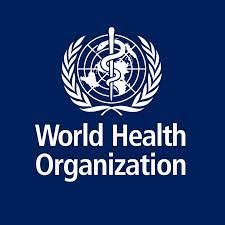… Imo tops nation in maternal deaths; government unveils free C-section plan
Nigeria’s maternal mortality crisis remains a pressing issue, with recent data from the Federal Ministry of Health revealing alarming statistics.
In 2023, Imo State led the country with the highest maternal mortality rate of 1,837.1 deaths per 100,000 live births closely followed by Lagos (966.1), Bayelsa (921.9), Katsina (886.8), Zamfara (789.9), and Plateau (753).
On the other end of the spectrum, Osun, Kaduna, and Kogi States had the lowest rates, with Osun reporting just 55.1 deaths per 100,000 births.
The report is a stark reminder of Nigeria’s longstanding struggle with maternal health. Despite global efforts to address the issue, the country remains third in the world for maternal deaths, with over 100,000 women dying annually due to pregnancy-related complications, according to World Health Organisation,(WHO) data.
In a bid to combat this issue, the Nigerian government, through Minister of Health and Social Welfare, Muhammad Pate, has announced that Caesarean sections (C-sections) will be made available at no cost to women in need.
This initiative is part of the government’s broader effort to reduce maternal mortality and enhance healthcare for pregnant women across the nation.
“By providing free C-sections, we are taking a crucial step toward addressing the barriers that prevent women from accessing safe and timely delivery services,” Minister Pate said recently at a conference in Abuja. “This policy is part of our broader commitment to improving maternal health in Nigeria.”
However, experts have raised concerns about the feasibility of this policy in light of Nigeria’s broader healthcare challenges.
In an exclusive interview with Africa Health Report, (AHR), Dr. Ejike Oji, a medical expert, pointed out that while the policy is well-intentioned, it is unlikely to have the desired impact without significant investment in the country’s healthcare infrastructure.
“The government needs to recruit and train more healthcare workers to ensure that hospitals can handle these cases,” Dr. Oji told AHR.
He added that most government-run hospitals lack the resources and training necessary to provide quality obstetric care, which could undermine the effectiveness of the free C-section initiative.
According to research from Dataphyte, Nigeria has an average of just 17 hospitals per 100,000 people, with many facilities underfunded and understaffed.
Nigeria’s healthcare system continues to suffer from chronic underinvestment, with the country failing to meet the Abuja Declaration target of allocating at least 15% of its national budget to healthcare.
Despite increases in the health budget from 2021 to 2024, funding remains insufficient to address the systemic issues that hinder access to quality maternal care.
As Nigeria grapples with these challenges, international bodies like the WHO have stressed the importance of addressing gender inequalities and improving healthcare infrastructure to ensure that all women, especially those in rural and underserved areas, can access life-saving services during childbirth.
The government’s free C-section policy is a welcome step, but experts agree that a more comprehensive approach is needed to tackle the root causes of Nigeria’s maternal mortality crisis. Without stronger health systems, better-trained staff, and a commitment to sustainable funding, the policy may fall short of its ambitious goals.



